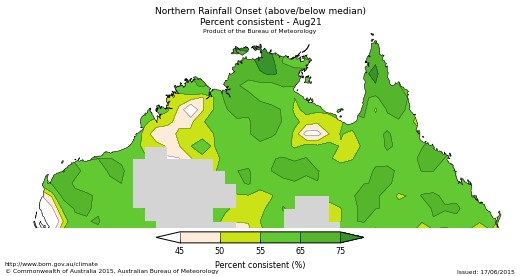The Northern Australia Climate Program – gaining a better understanding of our climate
Anne Marie Huey, Climate Mate for the East Kimberley and Victoria River District, USQ
Northern Australia is noted for its distinct wet/dry seasons – but how much do we really know about the key climate drivers that affect our region and therefore influence our weather?
To better understand our climate, the Northern Australia Climate Program (NCAP) has been launched. This project aims to bring the best climate scientists, advisors and cutting-edge researchers together with northern beef producers to better manage the impacts of operating in a variable climate.
The project is being run by the University of Southern Queensland (USQ), the Bureau of Meteorology (BoM) and the Department of Agriculture and Fisheries (Queensland), along with program partners Department of Primary Industry (Northern Territory), the Department of Primary Industry and Regional Development and Rangelands Natural Resource Management (Western Australia).
In practical terms, six ‘Climate Mates’ have been appointed (with two more to come) across Queensland, the Northern Territory and northern Western Australia, to liaise with pastoralists to determine what the industry wants and needs, in in relation to climate information, seasonal outlooks and decision-making tools.
A significant advantage of this program is that the design and delivery will be very much driven by what local producers want. Options include workshops, webinars, regular e-mail updates, one-on-one property visits or any other practical format requested.
The information delivered will also be dictated by pastoralists. There is a huge amount of climate information currently available – the trick is knowing where to look, how to interpret it and how to assess the reliability and relevance of the information.
This is where I come in. As the Climate Mate for the East Kimberley and Victoria River District, my job is to work closely with interested pastoralists to navigate the various web-sites and apps, so that you can find existing information. If you would prefer just to receive neatly packaged updates on a seasonal basis, that’s OK, too.
At this time of year, many producers are wondering when the wet will arrive. The BoM web-site has a handy model that attempts to answer this question and it is available for everyone to use at any time. The following map (Figure 1) shows the likelihood of having an early onset of the wet (defined as more than 50mm of rain accumulated after September 1st) across northern Australia.
The models predict there is a 35% - 45% chance of an early wet in the East Kimberley and VRD. Clearly, this means that there is a 55% – 65% chance of not having an early break. While this may not be particularly good news for most, it is also critical to assess the accuracy and reliability (also known as ‘skill’) of this forecast before making any investment decisions.
Figure 4 (above) shows there is a 35 – 45% chance of having an early wet season break across the East Kimberley and VRD – or a 55 – 65% chance of not having an early break. Source: Bureau of Meteorology
Figure 5 (below)shows the past ‘skill’, or reliability, of the model based on actual historical observations. In this case, for parts of the East Kimberley the consistency rating is less than 50%, and therefore not much better than a toss of the coin. Further east in the VRD, the consistency rating increases up to 75% and the forecast is more reliable.
Figure 5 (above) shows the past ‘skill’ is low for the East Kimberley but improves further east. Source: Bureau of Meteorology.
The project partners are very keen to hear how pastoralists envisage incorporating this sort of knowledge into the running of their properties to make more informed business, herd and land management decisions. Additionally, if you are looking for information or tools that are not currently available, this can be fed back to BoM who will then investigate whether the tools requested are feasible to develop.
This is a unique opportunity for producers in the north to shape the future direction of climate research. The greater the interest we can demonstrate from this part of the world, the more resources will be directed to increasing the understanding of the key climate drivers and how they interact across northern Australia. This will in turn will result in more accurate and reliable forecasts.
I strongly encourage anyone interested in finding out more about seasonal climate forecasting, local climate drivers or tips, tools and apps to get in touch either through email at annemarie.huey@usq.edu.au or by telephone on 08 9191 7069.
Please note, the Climate Mate for Barkly region is Alison Kain, who can be reached via Alison.kain@usq.edu.auor by telephone on 0409 281 649.
Anne Marie Huey
Climate Mate for the East Kimberley and Victoria River District
Northern Australia Climate Program
University of Southern Queensland
Ph: 08 9191 7069
annemarie.huey@usq.edu.au
Give feedback about this page.
Share this page:
URL copied!

